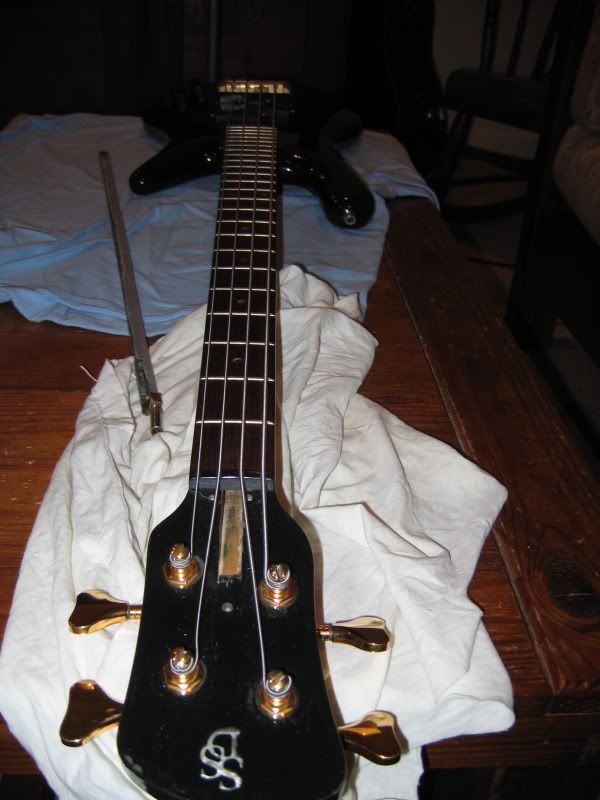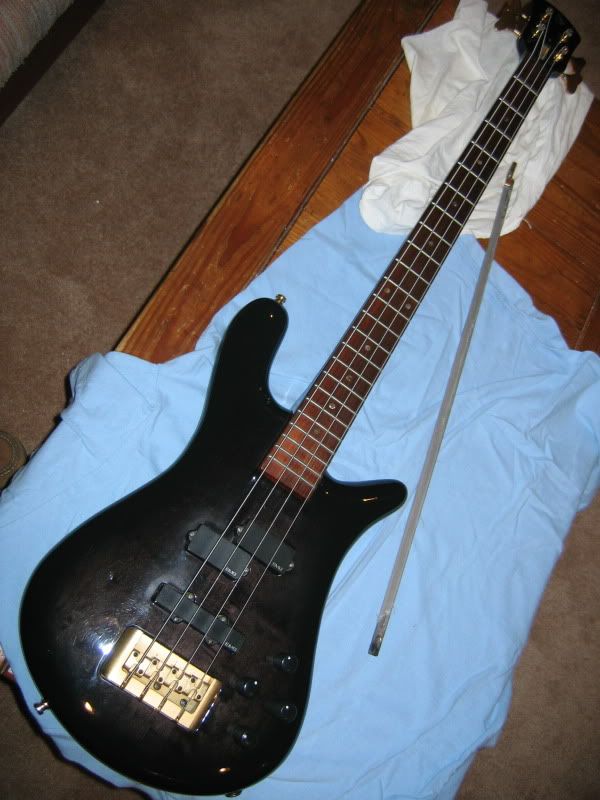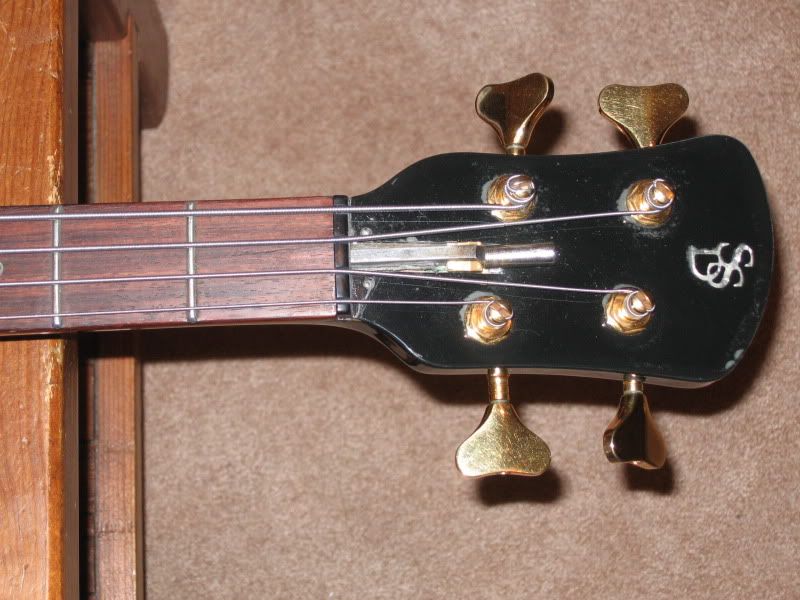Truss rods- The bane of my existence! Well maybe a bit overly dramatic, but when rods go bad it can be a bad sign for your guitar or bass. They are often extremely difficult or remarkable easy to repair and when a bass or guitar has a bad rod in the store their price must go down.
I have bought two basses knowing that the truss rods were non-functioning.
When you negotiate a deal like this you must consider the cost and likelihood of getting the inst. repaired and offer a price that is sensible for the value of the parts on the guitar or bass if you are faced with parting out the guitar when the repair is not successful.
The real objective of today’s report is to give you some insight into how truss rods work and how to figure out weather a bad rod can be repaired or replaced and therefore giving you the chance to pick up some great instruments for much less money.
Of the two basses that I have bought with bad rods, I have had success on one and I am still researching how to fix the other.
This work is demanding and not for the faint of heart, because you have to realize that if you fail you have a “wall hanger guitar”
First subject: Spector bass
I bought this Spector NS-2 bass in unplayable condition for the pickups.
It is a Czechoslovakian made bass that had a broken truss rod and I thought that I could remove the pickups, an EMG P-J set, and use them on another bass if I was unsuccessful.
The best feature of double acting truss rods is that they are not attached to the bass or guitar neck. They just sit in a channel routed in the neck and work like a charm. That is, until they break!
If you loosen these rods they will slide right out of the necks in which they were installed.
Sometimes this can involve a bit of effort in pulling out the old rod.
With this Spector bass, I just took a chance and loosened the rod and pulled it out of the neck.
Buying a replacement rod is simply measuring the old rod and ordering a replacement of the same dimensions.
I called Spector and they acknowledged the problem with this run of basses. A brass fitting that joined the two rods together tends to break just under the adjustment nut.
They offered to replace to rod for $75 if I shipped the bass back to them in a hard case and of course, I would pay for shipping both ways.
That is a very reasonable offer for a manufacturer to a non-original owner, but I wanted to fix it myself if I could.
I bought a double acting truss rod from Allparts for about $15. Fortunately the old rod came out with a bit of effort. It had a cloth covering over both rods that I assume was put on to limit rod rattling. The new rod was just bare steel and I was glad that it had no brass parts to break like the original rod.
I actually got the old rod working again by adding some washers under the adjustment nut.
I eventually did replace it with the new rod I purchased
Here are some pictures:

Here is a view of the whole bass and the old rod that I have just removed:

Here is the rod as it comes out of the neck:

I hope all of you have a great day and thanks for all of the replies yesterday.
bassman Bill
